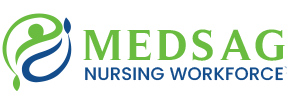“Patient Safety: Essential Strategies for Avoiding Common Hazards in Patient Care”
Introduction
Patient safety is an essential aspect of healthcare that is critical to the well-being of patients. As a nurse, it is important to be aware of the common hazards in patient care and to implement effective strategies to minimize the risk of harm to patients. The aim of this blog is to provide an overview of the common hazards in patient care and to provide practical tips on how to avoid them.
Understanding Patient Risks
The first step in avoiding common hazards in patient care is to understand the patients who are at risk of harm. Some patients are more vulnerable to harm than others, such as elderly patients, those with chronic conditions, and those who have recently undergone surgery. Understanding the underlying causes and types of patient harm can help you to identify patients who are at risk and to implement appropriate interventions to minimize the risk of harm.
Implementing Safe Practices
One of the most important strategies for avoiding common hazards in patient care is to implement safe practices. This includes adhering to infection control protocols, such as hand hygiene and wearing gloves, gowns, and masks when necessary. It is also important to properly handle and dispose of sharps, such as needles, to minimize the risk of injury. Fall prevention strategies are also important, especially for patients who are at risk of falls, such as those with mobility problems or those who are taking medications that cause drowsiness.
Medication Management
Medication management is another critical aspect of patient safety. As a nurse, it is important to administer medication safely and to avoid medication errors. This includes understanding the benefits and limitations of different types of medication, such as pain medication, and being aware of the potential for medication interactions. It is also important to monitor patients for adverse reactions and to respond promptly if necessary.
Emergency Response
Emergency response is another important aspect of patient safety. As a nurse, it is important to understand basic life support and to be prepared to respond to medical emergencies. This includes knowing how to perform CPR, how to use an AED, and how to respond to other types of emergencies, such as choking or cardiac arrest. It is also important to follow emergency protocols and to coordinate with the patient’s healthcare team to ensure that the appropriate interventions are implemented.
Conclusion
In conclusion, patient safety is a critical aspect of healthcare that is essential to the well-being of patients. By understanding the common hazards in patient care, implementing safe practices, and responding promptly to emergencies, nurses can play a key role in minimizing the risk of harm to patients. Whether you are working in a hospital, nursing home, or community health setting, it is important to prioritize patient safety and to implement effective strategies to avoid common hazards in patient care.

